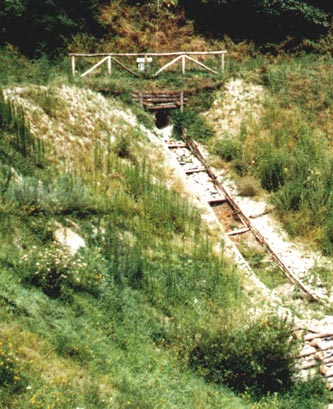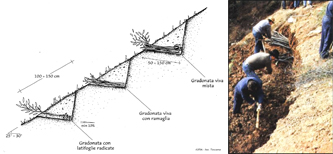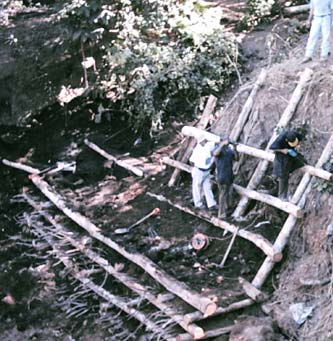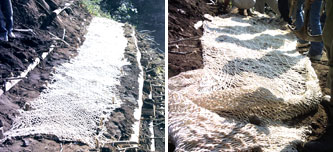 COUNTRY OF ORIGIN
COUNTRY OF ORIGIN• Italy
Soil Bioengeneering
Bioengineering in practice
The basic functions of bioengineering are as follows:
• technical: e.g. reduce erosion and consolidate road embankments or river banks;
• naturalistic: it not only creates a simple blanket of vegetation but also regenerates or triggers off paranatural ecosystems through the use of native species;
• aesthetic: blends interventions with the surrounding natural landscape;
• economical: competitive alternative to traditional interventions, replacing walled embankments, for example, with soil reinforced by a blanket of vegetation.
Bioengineering projects are multi-disciplinary; apart from purely physical interventions many other factors come into play. Numerous criteria must also be taken into account since projects include social and environmental issues, which are ordinarily not taken into much consideration or if so only after the realization of works. These projects establish a close relationship with the land, which influences construction work and which, in turn, is influenced by the interventions.
The basic principle behind optimal hydraulic and environmental systemisation is to implement protective measures only if they are really necessary. This depends on the extent of damage caused by certain phenomena (e.g. instability). An assessment has to be made to establish what degree of damage is acceptable and what isn’t, taking into account economic factors (construction and management costs vis-à-vis the value of goods to be protected) and political factors (environment, landscape, use, etc.).
Environmental impact can be minimised by making every effort to avoid limiting natural forces. In fact, erosion or landslides are part of nature’s dynamics and must not necessarily be limited.
In the same light, once the need for intervention has been established, a second important criterion is to reduce the problem by exploiting the capacity of the nature itself. In practice, this means leaving as much space as possible to natural dynamics.
Preliminary data needed in drawing up a project:
• Target area topography;
• Weather conditions;
• Pedological data;
• Hydrological data;
• Geological and geo-technical characterisation of the target area;
• Sampling of vegetation in the target area.
This information is then used to choose from a wide variety of interventions, commonly subdivided into four categories, three of which highlight functions (blanketing, consolidation and completion) and one construction material (combined materials).
Protective blankets
Protective blankets are particularly useful when soil needs rapid protection. Its function is primarily to cover and protect, while deeper underground activity is less important. It involves sowing suitable grass species and laying turf.
Stabilization and consolidation
These operations are used to stabilise soils that are threatened with intense destabilising mechanical action, where consolidation is needed deep down (e.g. brushlayers and palisades).
A typical example of stabilization – “brushlayer” (Tuscany region, 2000-2001) 
Combined interventions
Combined interventions involve both living and inert construction materials. Inert construction materials give an immediate effect while living plants take root and grow to increase stability.
Usually the application of inert material, which consolidates unstable embankments and slopes, is carried out before intervening with living material (stabilization, blanketing and complementary interventions).
Completion interventions
Completion interventions protect vegetation in the initial stages and promote further growth to secure preset goals.
A net made of jute completes work along a riverbank (Photo by Alessandro Petrone in Petrone A., F.Preti, 2005) 
Complementary interventions
Complementary interventions essentially involve planting various species of trees and bushes, and sowing different grasses. In effect, these interventions make use of classic reforestation techniques used in mountain valleys.
DOWNLOAD THE BROCHURE PDF
Spanish (1.3 MB)English (0.6 MB)







